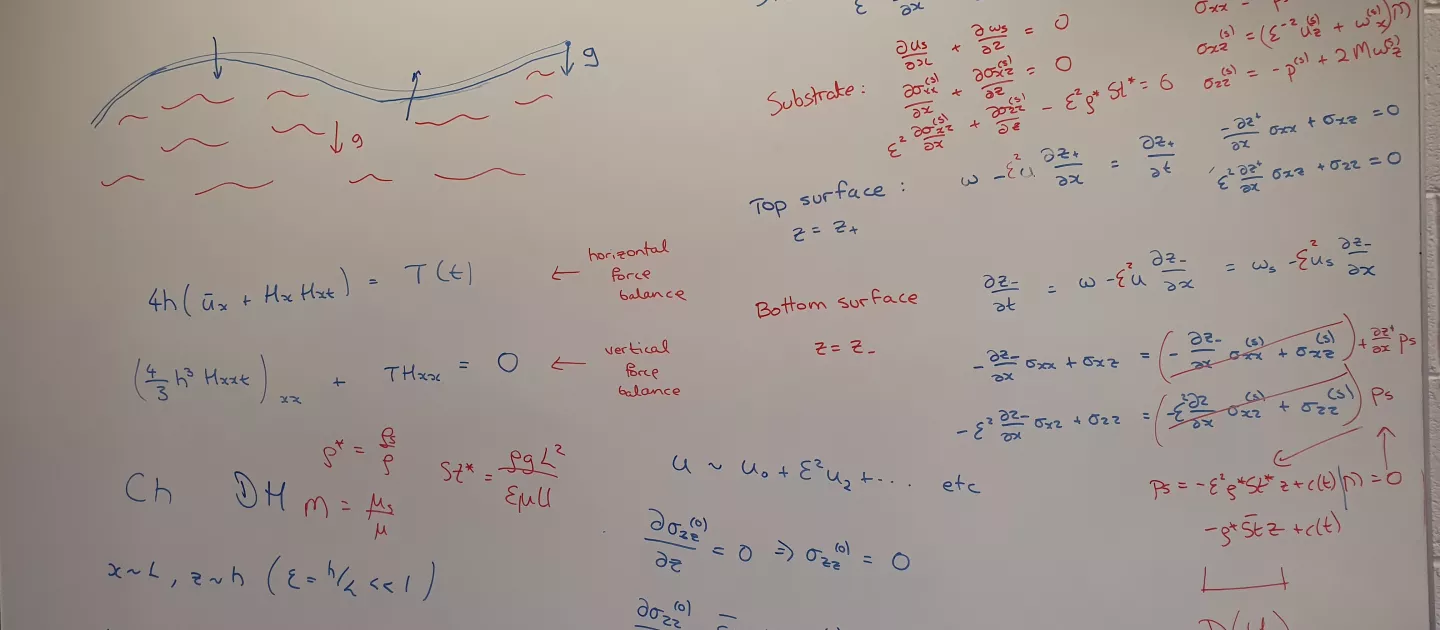Continuum Mechanics, Heat and Mass Transfer
A core focus in MACSI is using partial differential equations to describe the laws of conservation of mass, momentum and energy. By analysing and solving these equations, we make predictions and understand physical phenomena. Active areas within MACSI include:
Fluid mechanics - waves; vorticity; boundary layers; viscous flow; flow in porous media.
Solid mechanics - elasticity, plasticity, metals, wrinkling.
Heat and mass transfer: chemical extraction; chemical decontamination; battery modelling; crystallization.
Faculty: Kevin Moroney, Doireann O'Kiely, Eugene Benilov, Stephen O'Brien, Andrew Fowler, Sarah Mitchell, Michael Vynnycky
Other researchers: Milton O Assuncao, Emma Greenbank, Anthony Bonfils
Numerical Analysis & Scientific Computing
Numerical analysis and scientific computing involve the development of mathematical algorithms and computational methods to solve complex problems in science and engineering. These disciplines aim to approximate and simulate mathematical models, enabling the analysis of physical and natural phenomena. By combining mathematical theory with computer implementation, numerical analysis and scientific computing enhance our ability to understand and solve complex real-world problems efficiently via finite difference methods, finite element methods, finite volume schemes, and iterative algorithms.
Faculty: Natalia Kopteva, Alan Hegarty, Sarah Mitchell, Mehakpreet Singh
Inverse Problems
Inverse Problems is a field of mathematics that underpins non-destructive testing and imaging of materials. In a typical inverse problem, an object is interrogated with near or far-field acoustic, elastic, or electromagnetic waves which interact with the material within the object under investigation. Such interaction, which depends on the physical properties of the object, is then measured with sensors, e.g., on the surface of the object, in bore holes, or in the far-field and this signal is then used to infer the material properties of the object.
Inverse Problems employs a vast array of both classical and cutting-edge mathematical methods, primarily in the areas of analysis, differential geometry, optimisation, numerical analysis, and statistics. Our Inverse Problems research group at UL has expertise in partial differential equations and applied analysis, including microlocal analysis; a powerful technique for analysing the propagation of singularities in the solution of wave equations. This in turn identifies artifacts in the reconstructed image.
Inverse problems are mathematically challenging since they are typically non-linear and ill-posed: a small error in the (sensor) measurements can result in a very large change in the reconstructed image of the material properties. There is also a fundamental obstruction to uniqueness when imaging anisotropic materials, resulting in a fundamental open mathematical and practical question about how to image such materials. The range of applications of inverse problems is enormous, covering fields from medical imaging, Earth exploration, cloaking and invisibility, non-destructive testing of materials, as well as many other areas.
Faculty: Romina Gaburro, Clifford Nolan
Mathematics for Industry
We have a strong track record of developing mathematical models to solve problems in industry. Our work most commonly involves developing and implementing fluid mechanics or heat and mass transfer models for industrial applications, either to overcome existing challenges or to support process design. Our past application areas include manufacturing, biomedical devices and pharmaceuticals.
See our Industry page for more information.
Faculty: Andrew Fowler, Stephen O'Brien, Doireann O'Kiely, James Gleeson, Kevin Moroney, Michael Vynnycky, Mehakpreet Singh
